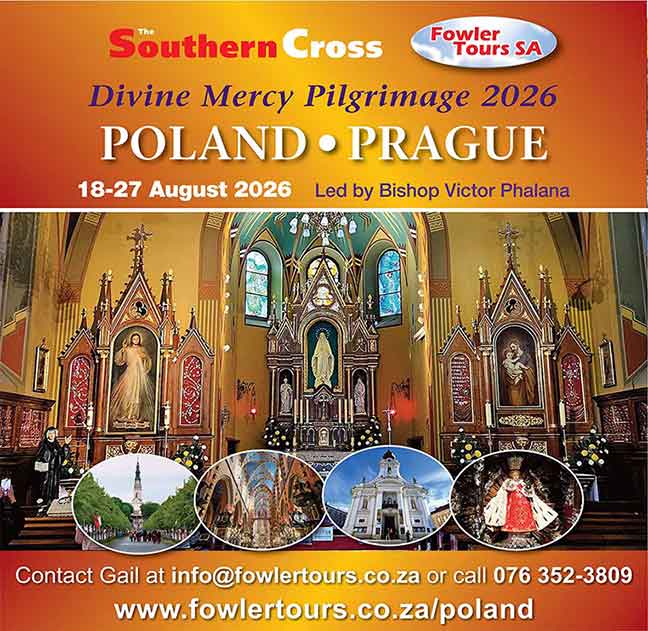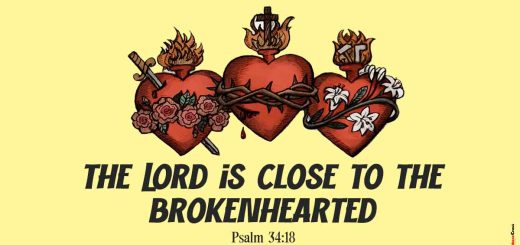A Community of Creation

Clockwise from top left: Fr Dan Horan OFM, Fr Thomas Merton, St Francis of Assisi, and Pope Francis
The idea of humanity’s dominion over nature has proved disastrous, and the stewardship model is flawed. But there is a third way, Terence Creamer writes.
The way Christians perceive creation has a profound, sometimes destructive, influence on how we interact with the natural environment. Franciscan Father Dan Horan, who toured Southern Africa earlier this year as part of the Jesuit Institute’s Winter Living Theology lecture series, believes that the “paradise consciousness” of St Francis of Assisi and Fr Thomas Merton provides a powerful alternative model — one premised on humanity’s deep interconnectedness and its full dependence on creation, rather than one of domination or even stewardship.
Fr Horan, director of the Center for Spirituality and professor of philosophy, religious studies and theology at St Mary’s College in Notre Dame, Indiana, argues that three models of creation have shaped Christian environmental consciousness over the centuries: the Dominion, the Stewardship and the Kinship models.
The Dominion Model, he says, arises from an interpretation of Genesis 1:26, where God gave human beings “dominion over the fish of the sea, and over the birds of the air, and over all the wild animals”. This is typically quoted together with God’s instruction that humanity should “fill the earth and subdue it” (1:28).
Conscious, or unconscious, adopters of the model argue that human beings are the centrepiece of God’s creation and that everything else has been created for humanity to “use as we please”. In other words, it’s a sense of sovereignty that sets humanity apart from — and above — the rest of the natural world.
The negative environmental consequences of such an interpretation have been far-reaching and are visible in everything from the extinction of species and the destruction of natural forests, through to high levels of air and water pollution, and increasingly in the floods, fires and droughts being triggered and/or amplified by climate change.
The scriptural, theological and scientific contradictions associated with the Dominion Model have led Christian scriptural scholars and theologians to re-examine how Genesis should be read and understood. Most are now aligned with the sentiments expressed by Pope Francis in his encyclical Laudato Si’ that such an interpretation is “not a correct understanding of the Bible as understood by the Church”.
As a result, a Stewardship Model has emerged as the dominant framework for understanding creation and humanity’s relationship with creation. While the approach continues to view humanity as special and, thus, separate from creation, the universe is understood to be God’s “household” which human beings are entrusted to care for as “good stewards”. The model is arguably reflected in the full title of Laudato Si’ , with its subtitle, “On Care for our Common Home”.
The Stewardship Model takes its lead from Genesis 2:15, which states: “Then the Lord God took the man and put him in the garden to till it and keep it” — in other words, to be good gardeners and landlords for all of creation. The model, Fr Horan explained, assumes that humanity has a “vocation, a divine mandate and a responsibility to care for the rest of creation” and represents a significant improvement on one that suggests that nature should be subdued. “We are intermediaries — both ‘ha-adamah’ [earth] and ‘Imago Dei’ [Image of God] — serving to represent nonhuman creation to God.”
Nevertheless, human beings continue to stand at the centre, albeit without absolute free rein. “The intrinsic relationship humanity has with non-human creation by virtue of being part of creation is downplayed and our ‘distinctiveness’ is overly emphasised,” says Fr Horan.
An alternative model
Fr Horan believes that scripture, as well as the teachings of St Francis and the writings of 20th century American Trappist monk Thomas Merton, are pointing to an alternative model, glimpses of which are already evident in Pope Francis’ 2015 encyclical, the title of which is taken from the first two Italian words of St Francis’ famous “Canticle of the Creatures”, which in its English translations starts with the words “Praise be”.
Described as the Kinship Model, or the Community of Creation Model, this approach seeks to recognise humanity’s profound interconnectedness with all creation. Fr Horan stresses that such an approach, while not currently widely recognised or embraced, is not novel. It is reflected in St Francis’ well-known love for animals and his kinship even with those inanimate parts of the created order, such as the sun, the moon, and the earth, which he termed brother, sister and mother.
“Often the Canticle is romanticised. But the heart of St Francis’ nature mysticism is a deep understanding of our interconnection, our interdependence and our interrelationship with all of creation,” Fr Horan asserts.
The Kinship Model starts from a recognition that human beings “are creation” and are not separated from it, as emphasised in Genesis 2 — that humanity is from the dust of the earth and is, thus, made from the same elements that make up the rest of creation. “We are part of the same family; we share a deep DNA that is so close to the DNA found in everything else around us, and on an atomic level [that] we are almost indistinguishable from the rest of creation,” Fr Horan notes.
This realisation, Horan argues, is not something to be feared but to be celebrated, as Thomas Merton showed in his meditation on the trees, which is found in his 1949 book New Seeds of Contemplation: “A tree gives glory to God by being a tree. For in being what God means it to be it is obeying God. It ‘consents’, so to speak, to God’s creative love. It is expressing an idea which is in God and which is not distinct from the essence of God, and therefore a tree imitates God by being a tree.”
Reflecting his growing awareness of humanity’s kinship with creation, Merton wrote in 1963: “How absolutely true, and how central a truth, that we are purely and simply part of nature.” Similarly, Pope Francis prays in Laudato Si’: “Teach us to discover the worth of each thing, to be filled with awe and contemplation, to recognise that we are profoundly united with every creature as we journey towards your infinite light.”
For Fr Horan, humanity’s interconnectedness is not simply poetic or sentimental. “Instead, it is a statement of the most profound truth affirmed by both science and religion.”
To learn more about the ‘kinship model of creation,’ the following two books are recommended: Daniel P. Horan, All God’s Creatures: A Theology of Creation (2018) and Elizabeth A. Johnson, Ask the Beasts: Darwin and the God of Love (2014).
Published in the November 2022 issue of The Southern Cross magazine
- Fr David Neuhaus: ‘Bible is abused to create hell for people’ - August 12, 2025
- Ministry to the Deaf was a ‘Conversion Experience’ - July 28, 2025
- How Being a Jesuit Shaped Francis’ Papacy - April 24, 2025





